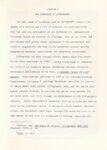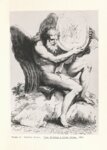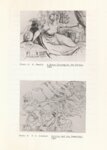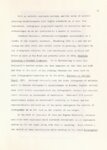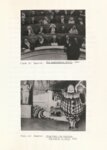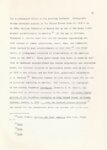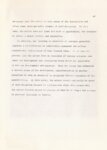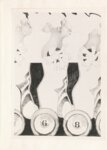| Description |
This thesis is based on an evaluation and comparison of two separate but complementary attitudes toward the function of lithography: that of the fine artist and that of the commercial printer. After the technical invention of lithography, it was soon realized that this method of printing was capable of imitating various drawing techniques as well as being an excellent process for mUltiple printing. At this point, two separate attitudes developed which emphasized the direction commercial lithography and fine art lithography would take in the future. From the commercial printer's standpoint, the imitative qualities of the method were its strength and justification. Quantitative printing was important in relation to commercial forms of competition and between the professional printers themselves. From the artist's point of view, the reproductive qualities of lithography were secondary to the process as being a new means of creative expression. The economic advantage of multiple printing was important to the artist as being an inexpensive medium capable of cultivating and influencing- great numbers of people. Technical advancement of black-white and color reproduction and the demand for large editions quickly marked the decisive and progressive direction of commercial lithography. The replacing of stone with metal and the construction of mechanical presses initiated a new era in the development of the processor For a century since its invention, lithography' has been superior to all previous methods of printing in terms of immediacy of execution and quantitative reproduction. With the invention of photography, photo-engraving, and the introduction of offset printing, the technique was stripped of its sensation as a unique new media. This meant that further technical advancement and artistic interest played a decisive role in the establishment of lithography as a significant art form and commercial process. In the past one hundred and fifty years, commercial lithography has evolved from small printing establishments to large corporate industries. Likewise, the image of fine art lithography has changed from the small intimate black and white prints, popular since the fifteenth century, to large prints which rival paintings and sculpture in size, color and importance. Today the commercial and fine art approach to creating a significant artistic form is similar in many ways. However, the main difference between the two attitudes toward art and the function of lithography lies in the content and purpose of the particular work. Where sensitive commercial artists, designers, photographers, and art directors have successfully adopted fine art techniques and principles to their own intent, these adaptations have lifted the standards of all visual communication. At the same time, this interaction of attitudes has also highly influenced the images of fine art beginning with the appearance of 'Pop art up to the present. Trends in a commercial art form depend' upon a combination of individual creativity and the degree of freedom and understanding the artist has from his sponsors. This form of creative restriction, however, is similar to the dilemma the fine artist may find himself in with a dealer or commissioned work. As with both cases, the artist's creativeness can be greatly reduced by the client. |










